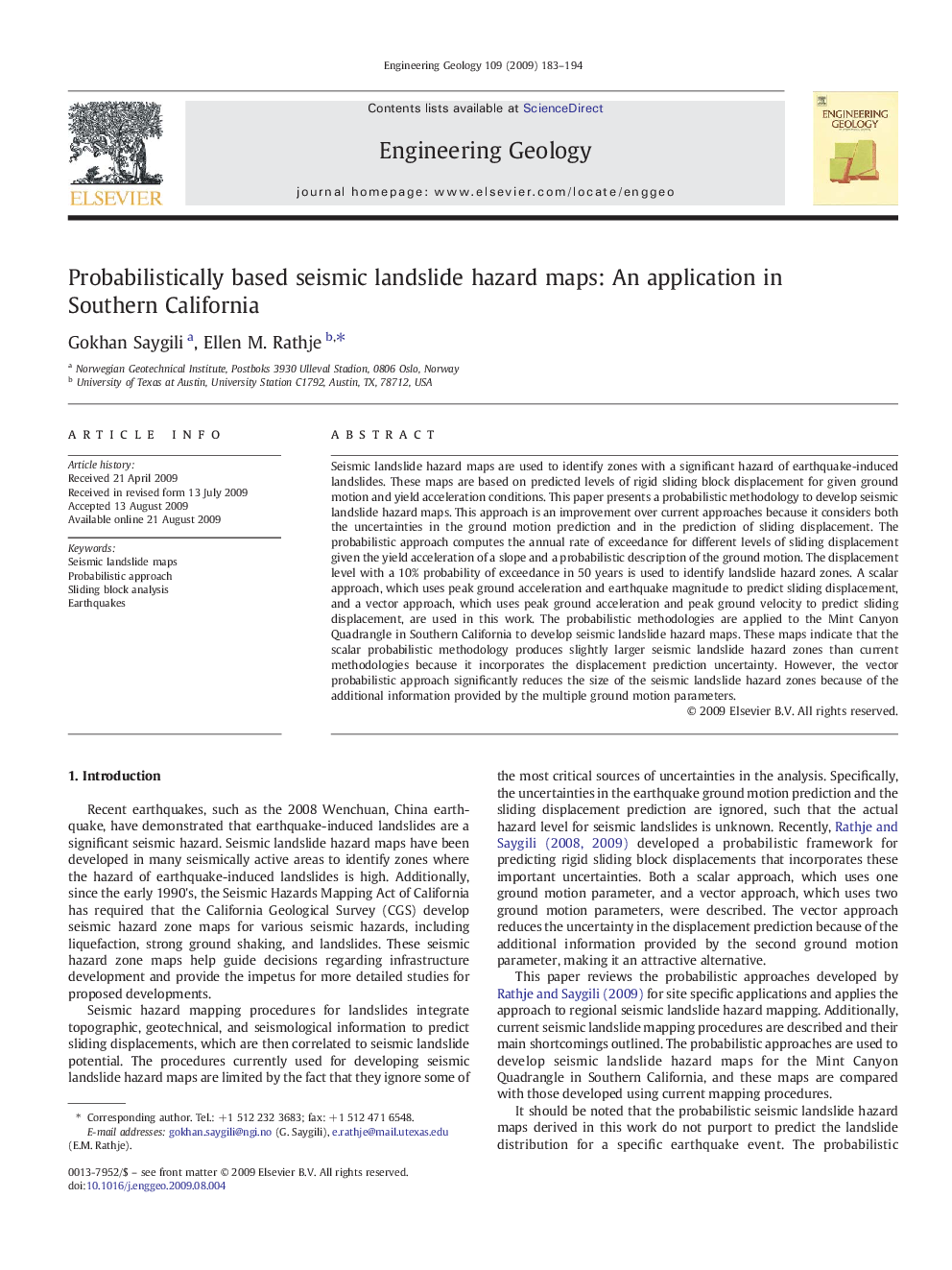| Article ID | Journal | Published Year | Pages | File Type |
|---|---|---|---|---|
| 4744514 | Engineering Geology | 2009 | 12 Pages |
Abstract
Seismic landslide hazard maps are used to identify zones with a significant hazard of earthquake-induced landslides. These maps are based on predicted levels of rigid sliding block displacement for given ground motion and yield acceleration conditions. This paper presents a probabilistic methodology to develop seismic landslide hazard maps. This approach is an improvement over current approaches because it considers both the uncertainties in the ground motion prediction and in the prediction of sliding displacement. The probabilistic approach computes the annual rate of exceedance for different levels of sliding displacement given the yield acceleration of a slope and a probabilistic description of the ground motion. The displacement level with a 10% probability of exceedance in 50Â years is used to identify landslide hazard zones. A scalar approach, which uses peak ground acceleration and earthquake magnitude to predict sliding displacement, and a vector approach, which uses peak ground acceleration and peak ground velocity to predict sliding displacement, are used in this work. The probabilistic methodologies are applied to the Mint Canyon Quadrangle in Southern California to develop seismic landslide hazard maps. These maps indicate that the scalar probabilistic methodology produces slightly larger seismic landslide hazard zones than current methodologies because it incorporates the displacement prediction uncertainty. However, the vector probabilistic approach significantly reduces the size of the seismic landslide hazard zones because of the additional information provided by the multiple ground motion parameters.
Keywords
Related Topics
Physical Sciences and Engineering
Earth and Planetary Sciences
Geotechnical Engineering and Engineering Geology
Authors
Gokhan Saygili, Ellen M. Rathje,
